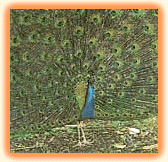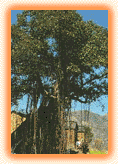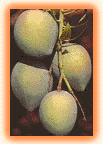|
||||||||||||||||
JANA-GANA-MANA-ADHINAYAKA, JAYA HE
BHARATA-BHAGYA-VIDHATA
PUNJAB-SINDHU-GUJARATA-MARATHA-
DRAVIDA-UTKALA-BANGA
VINDHYA-HIMACHALA-YAMUNA-GANGA
UCCHHALA-JALADHI TARANGA
TAVA SUBHA NAME JAGE
TAVA SUBHA ASHISHA MAGE
GAHE TAVA JAYA GATHA.
JANA-GANA-MANGALA DAYAKA, JAYA HE
BHARATA-BHAGYA-VIDHATA,
JAYA HE, JAYA HE, JAYA HE,
JAYA JAYA JAYA, JAYA HE
The following is a translation of Rabindranath Tagore's rendering of the stanza:
Thou art the ruler of the minds of all people, dispenser of India's destiny. The name rouses the hearts of Punjab, Sind, Gujarat and Maratha,of the Dravid and Orissa and Bengal; it echoes in the hills of the Vindhyas and Himalayas, mingles in the music of the Yamuna and Ganga and is chanted by the waves of the Indian Sea. They pray for thy blessings and sing thy praise. The salvation of all people is in thy hand, thou dispenser of India's destiny. Victory, victory, victory to thee.
click here for the sound clip of the National Anthem.
 The National Emblem of India is a replica of the
Lion of Sarnath, near Varanasi in Uttar Pradesh. The Lion Capital was
erected in the third century BC by Emperor Ashoka to mark the spot where
Buddha first proclaimed his gospel of peace and emancipation to the
four quarters of the universe.The National emblem is thus symbolic of
contemporary India's reaffirmation of its ancient commitment to world
peace and goodwill.
The National Emblem of India is a replica of the
Lion of Sarnath, near Varanasi in Uttar Pradesh. The Lion Capital was
erected in the third century BC by Emperor Ashoka to mark the spot where
Buddha first proclaimed his gospel of peace and emancipation to the
four quarters of the universe.The National emblem is thus symbolic of
contemporary India's reaffirmation of its ancient commitment to world
peace and goodwill.
The four lions (one hidden from view) - symbolising power, courage and confidence - rest on a circular abacus. The abacus is girded by four smaller animals - guardians of the four directions: the lion of the north, the elephant of the east, the horse of the south and the bull of the west.The abacus rests on a lotus in full bloom, exemplifying the fountainhead of life and creative inspiration. The motto 'SATYAMEVA JAYATE' inscribed below the emblem in Devanagari script means 'Truth alone Triumphs'.
 The Indian
flag was designed as a symbol of freedom. The late Prime Minister
Nehru called it a flag not only of freedom for ourselves, but a symbol
of freedom to all people.
The Indian
flag was designed as a symbol of freedom. The late Prime Minister
Nehru called it a flag not only of freedom for ourselves, but a symbol
of freedom to all people.
The flag is a horizontal tricolour in equal proportion of deep saffron on the top, white in the middle and dark green at the bottom. The ratio of the width to the length of the flag is two is to three. In the centre of the white band, there is a wheel in navy blue to indicate the Dharma Chakra, the wheel of law in the Sarnath Lion Capital. Its diameter approximates the width of the white band and it has 24 spokes. The saffron stands for courage, sacrifice and the spirit of renunciation; the white, for purity and truth; the green for faith and fertility.
 The tiger
or Panthera Tigris is a large carnivorous feline, mane less and of
tawny yellow colour with blackfish transverse stripes and white belly.
It is proverbial of its power and magnificence.
The tiger
or Panthera Tigris is a large carnivorous feline, mane less and of
tawny yellow colour with blackfish transverse stripes and white belly.
It is proverbial of its power and magnificence.
There are very
few tigers left in the world today. A decade ago the tiger population
in India had dwindled to a few hundreds. The Government of India,
under its Project Tiger programme, started a massive effort to preserve
the tiger population. Today, thanks to Project Tiger, India's population
of tigers has considerably increased.
 Male
bird of species P. cristatus, is a native of India, with striking
plumage and upper tail converts marked with iridescent ocelli, able
to expand its tail erect like fan as ostentatious display. Peacocks
are related to pheasants.
Male
bird of species P. cristatus, is a native of India, with striking
plumage and upper tail converts marked with iridescent ocelli, able
to expand its tail erect like fan as ostentatious display. Peacocks
are related to pheasants.
Found wild in India ( and also domesticated in villages ) they live in jungle lands near water. They were once bred for food but now hunting of peacocks is banned in India. The peahen has no plumage. These birds do not sound as beautiful as they look - they have a harsh call.
 The Lotus
or waterlily is an aquatic plant of Nymphaea with broad floating
leaves and bright fragrant flowers that grow only in shallow waters.
The leaves and flowers float and have long stems that contain air
spaces. The big attractive flowers have many petals overlapping
in a symmetrical pattern. The root functions are carried out by
rhizomes that fan out horizontally through the mud below the water.
Lotuses, prized for their serene beauty, are delightful to behold
as their blossoms open on the surface of a pond. In India the sacred
lotus is legendary and much folklore and religious mythology is
woven around it.
The Lotus
or waterlily is an aquatic plant of Nymphaea with broad floating
leaves and bright fragrant flowers that grow only in shallow waters.
The leaves and flowers float and have long stems that contain air
spaces. The big attractive flowers have many petals overlapping
in a symmetrical pattern. The root functions are carried out by
rhizomes that fan out horizontally through the mud below the water.
Lotuses, prized for their serene beauty, are delightful to behold
as their blossoms open on the surface of a pond. In India the sacred
lotus is legendary and much folklore and religious mythology is
woven around it.
 Indian
fig tree, Ficus bengalensis, whose branches root themselves like
new trees over a large area. The roots then give rise to more
trunks and branches. Because of this characteristic and its longevity,
this tree is considered immortal and is an integral part of the
myths and legends of India. Even today, the banyan tree is the
focal point of village life and the village council meets under
the shade of this tree.
Indian
fig tree, Ficus bengalensis, whose branches root themselves like
new trees over a large area. The roots then give rise to more
trunks and branches. Because of this characteristic and its longevity,
this tree is considered immortal and is an integral part of the
myths and legends of India. Even today, the banyan tree is the
focal point of village life and the village council meets under
the shade of this tree.
 A fleshy
fruit, eaten ripe or used green for pickles etc., of the tree
Mangifera indica, the mango is one of the most important
and widely cultivated fruits of the tropical world. Its juicy
fruit is a rich source of Vitamins A, C and D. In India there
are over100 varieties of mangoes, in different sizes, shapes
and colours. Mangoes, have been cultivated in India from time
immemorial. The poet Kalidasa sang its praises. Alexander savoured
its taste, as did the Chinese pilgrim Hieun Tsang. Mughal emperor
Akbar planted 100,000 mango trees in Darbhanga, Bihar at a place
now known as Lakhi Bagh.
A fleshy
fruit, eaten ripe or used green for pickles etc., of the tree
Mangifera indica, the mango is one of the most important
and widely cultivated fruits of the tropical world. Its juicy
fruit is a rich source of Vitamins A, C and D. In India there
are over100 varieties of mangoes, in different sizes, shapes
and colours. Mangoes, have been cultivated in India from time
immemorial. The poet Kalidasa sang its praises. Alexander savoured
its taste, as did the Chinese pilgrim Hieun Tsang. Mughal emperor
Akbar planted 100,000 mango trees in Darbhanga, Bihar at a place
now known as Lakhi Bagh.
National Insignia
Ministry Of External Affairs, India